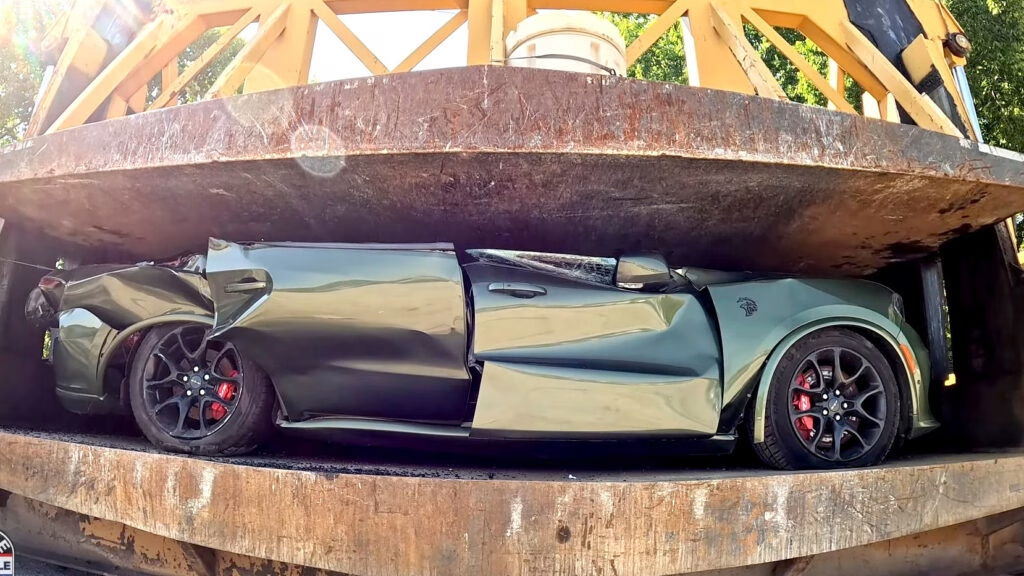Why Did Kentucky Police Crush a Dodge Durango Hellcat Instead of Auctioning It?
When news broke that Louisville police crushed a 2021 Dodge Durango Hellcat, car enthusiasts and casual observers alike were left scratching their heads. Why destroy a rare, high-powered SUV when it could have been sold or repurposed? The answer, as it turns out, is tangled up in a mix of public safety, legal headaches, and a dash of political theater.
What Led to the Seizure of the Durango Hellcat?
The Durango Hellcat wasn’t just any SUV—it was a 710-horsepower beast, seized during the 2024 Street Rod Nationals as part of Louisville’s crackdown on illegal street racing and so-called “takeovers.” Since 2023, the city has confiscated 167 vehicles linked to these dangerous events. According to the Louisville Metro Police Department, the campaign is about more than just impounding flashy cars. Their message: reckless driving puts lives at risk, and the city won’t stand for it.
But this particular Hellcat had another problem. After closer inspection, police discovered it was loaded with stolen parts—including the engine. That detail changed everything. Auctioning off a vehicle with questionable origins isn’t just a paperwork nightmare; it’s a liability risk. If someone bought it and later discovered stolen components, the city could be on the hook for legal trouble. Turning it into a police cruiser was also off the table, given the cost and risk of using a Frankenstein’d vehicle for official duty.
Why Turn the Crushing Into a Public Spectacle?
Here’s where things get interesting. Instead of quietly scrapping the Durango, the city staged a 20-minute event, complete with cameras, drones, and a mayoral button-push to flatten the SUV. Was it over the top? Maybe. But the spectacle was intentional. Louisville officials wanted to send a clear warning: illegal street racing won’t be tolerated, and the consequences are real—and very public.
Mayor Craig Greenberg didn’t mince words. He cited a nearly 40% drop in illegal street racing since the crackdown began, crediting the city’s hardline approach. His message to would-be racers was blunt: if you get caught, your car could be next in line for the crusher. And if it’s not street legal, it’s not coming back.
Could the Car Have Been Saved or Repurposed?
Plenty of critics argued that destroying the Hellcat was wasteful. Why not auction it off and use the proceeds for community programs or road safety initiatives? On the surface, it sounds like a win-win. But the reality is stickier. Vehicles with stolen parts can’t legally be sold at auction, and the process of stripping and authenticating every component would be time-consuming and expensive. Plus, there’s the risk that a rebuilt car could end up back on the street, potentially involved in more illegal activity.
Other cities have faced similar dilemmas. In some cases, seized vehicles are repurposed for police use or sold after thorough inspection. But when a car’s provenance is murky, destruction is often the safest—and simplest—option.
Is Public Shaming an Effective Deterrent for Street Racing?
The Louisville stunt wasn’t just about one car. It was a calculated move to get people talking—and thinking twice about street racing. Public shaming has a long history in law enforcement, from perp walks to press conferences. The idea is simple: make the consequences visible, and you might scare off potential offenders.
Does it work? The data is mixed. According to the National Highway Traffic Safety Administration, visible enforcement and public awareness campaigns can reduce risky driving behaviors. Louisville’s reported 40% drop in street racing suggests the approach is having some effect, though it’s hard to separate the impact of public stunts from increased patrols and tougher penalties.
What’s the Real Cost of These Publicity Stunts?
Let’s be honest: orchestrating a multi-camera car crushing isn’t cheap. Critics have pointed out that the resources spent on the event could have been used elsewhere. But from the city’s perspective, the media coverage and viral social media moments are worth the investment. After all, a dramatic video of a Hellcat meeting its end is a lot more memorable than a dry press release.
Still, there’s a fine line between deterrence and grandstanding. If the public perceives these events as wasteful or performative, the message can backfire. Transparency about why certain vehicles are destroyed—and what the city hopes to achieve—helps keep the focus on public safety rather than spectacle.
What Can Other Cities Learn From Louisville’s Approach?
Louisville’s handling of the Durango Hellcat offers a few lessons for other cities grappling with illegal street racing. First, a visible, no-nonsense approach can get results, especially when paired with consistent enforcement. Second, transparency about why vehicles are destroyed (rather than auctioned) is crucial for public trust. And finally, while publicity stunts grab headlines, they should always be grounded in a genuine commitment to safety—not just a desire for viral moments.
The big takeaway? Tackling street racing isn’t about perfection—it’s about smarter adjustments. Start with one change this week, and you’ll likely spot the difference by month’s end.

